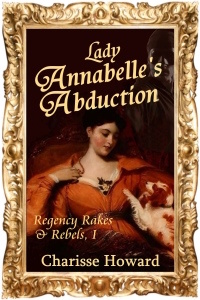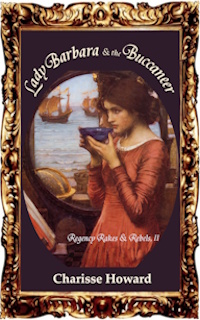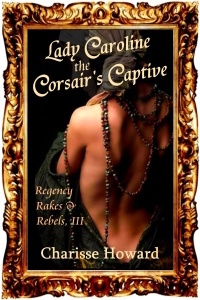The two questions I'm most often asked by readers of my Regency Rakes & Rebels romances are:
- Do you make up what's in your books -- the stories, the characters, the places, and events going on in the background -- or is it real?
- Where do you get your ideas?
The simple answers are:
- The main characters and their stories are mostly made up. The places and background events are mostly real.
- That's where I get my ideas.
So here, for your entertainment, are my personal stories behind the ones in the books.
A is for Lady Annabelle's Abduction (Book I).
Some like it hot. If that's you, don't miss the debut romance in this spicy series! The scenery comes from my many fond visits to the classic English countryside. Between the lanes and hedgerows, under the oaks and copper beeches, Lady Annabelle Chatfield cuddles with her spaniel, Lochinvar, and flirts with Chatfield Hall's new footman. Only a week until her marriage to the Earl of Brackenbury! Personally, I've never had a fling with either an earl or a footman, but as a lifelong animal lover I grabbed the chance to include a dog as a main character in this heart-stopping Regency romance. And, of course, there are horses. I adore horses!
B is for Lady Barbara & the Buccaneer (Book II).
What's steamier than New Orleans, spicier than gumbo, and as wild as Mardi Gras? I love the Louisiana bayous and was amazed to learn what a colorful role the islands of Barataria Bay played in the post-revolution squabbles between the U.S., Great Britain, France, and Spain over land and trade. In this Regency historical romance, Lady Barbara Poole, exiled from London to the tiny fishing community of Grand Isle, joins her cousin Frank for a pirates' Carnival. The Americans banned Mardi Gras when they bought the Louisiana Territory from France in 1803 (Napoleon needed money to invade Britain). Now only Jean Laffite and his band dare to celebrate. Swept into an all-night revel by the Black Buccaneer, Barbara wakes with a full heart, an empty bed, and a mystery she'll have to cross an ocean to solve.
C is for Lady Caroline, the Corsair's Captive (Book III).
Those officers who kept marching in and out of Jane Austen's novels were part of a worldwide war. Napoleon, having flipped off the French Revolution by making himself Emperor, set out to conquer the rest of Europe. Across the Mediterranean, the rulers of North African ports like Tunis, Algiers, and Tripoli already were turning a blind eye to the Barbary Coast corsairs in return for bribes. France had recklessly stiffed the dey of Algiers years earlier on a bill for feeding its soldiers. I couldn't help wondering: What if Napoleon grabbed the chance to settle that account and bolster his Mediterranean forces? Wouldn't the corsairs once again become warriors in Europe's proxy battle? That's the mess which ensnares Lady Caroline Grantby when she's traveling in North Africa with her parents and impulsively marries Jerome Sarratt. What she doesn't realize is that this son of her father's old British Army friend is also the Comte de Gilordeau, and a prime target for both sides. No sooner do the newlyweds embark for London than they're captured by the fiercest of the Barbary Coast corsairs: Barbarossa. It's up to Caroline to save herself and Jerome; and she only has one very risky shot.


